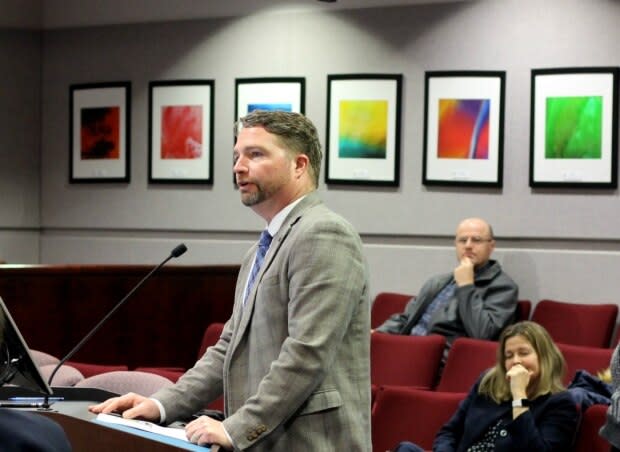50 ash trees to be cut down, 450 treated as invasive emerald ash borer moves into Moncton
Dan Hicks, director of Parks for the City of Moncton, says approximately 500 ash trees, now under threat from the destructive emerald ash borer, will be cut or treated in the next few years.
A plan was developed after the insect was found in a north-end tree on private property last summer.
"The statistics show…that 99 per cent of ash trees die within the first six years of detection," Hicks said.
Ash trees are found along city streets and in some parks. There are a few clusters along Millennium Boulevard.
Hicks said after completing inspections, about 50 of the city's ash trees are in poor condition and will have to be cut down "before they become hazardous," and replaced with another species.

The remaining 450 are in "reasonable" shape and will be treated in an effort to keep them for as long as possible.
"Basically I'm looking at the ash trees now that are in good condition and I'm looking at basically renting them for the next few years versus having to go through all the expense of removal and replacement all at once."
Hicks said the cost to remove and replace a tree is about $1000, while the cost to inject a tree with a chemical that repels the emerald ash borer, is just $30 a year.
"The [ash trees] that are in good condition, we do plan to treat them with the systemic insecticide to keep them as long as we possibly can," he said.
City not responsible for trees on private land
The city's plan calls for different types of trees to be replanted once an ash tree has been removed. Hicks says the plan is to stagger removal and replanting of trees over several years.
The municipality is only responsible for trees on city-owned land, so private home owners will have to monitor their ash trees.
"There is a healthy tree-care community in New Brunswick and in Moncton, so there are local contractors that could be available to assist if required."

While 500 trees may sound like a large number, Hicks says it is only about three per cent of Moncton's "urban forest" and the city is lucky it has a diverse range of tree species.
"Ash isn't as prevalent in the native forest here as it is in other areas of the province like, for instance, Fredericton," he said.
"Most of the ash in the area have been planted as landscape trees and specimen trees."
Government expands regulated areas
This month, the Canadian Food Inspection Agency expanded its "regulated areas" for emerald ash borer in New Brunswick after the insect was discovered in Oromocto and Moncton during the summer.
The regulations, which are intended to slow the spread of the invasive pest, are now in effect in the west and southwestern counties of Victoria, Carleton, York, Sunbury, Queens, Kings, Westmorland and Albert.
"Effective immediately ash materials, including logs, branches and wood chips and firewood of all species from these counties cannot be moved outside of the regulated area without permission from the CFIA," according to a government news release .
The emerald ash borer destroys trees by boring into wood and laying their eggs just below the bark, Hicks explained.
"The larvae, as they start to feed, they eat the tissue just beneath the bark and they're in such large quantities when they attack that they basically eat all the living tissue beneath the bark and the tree can no longer support itself."


